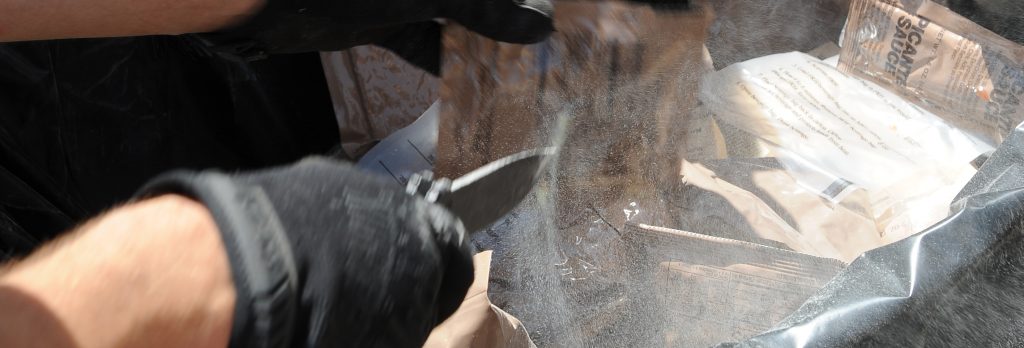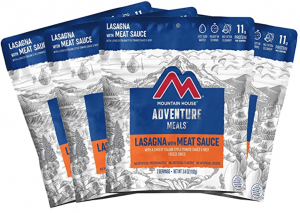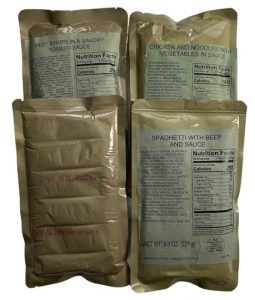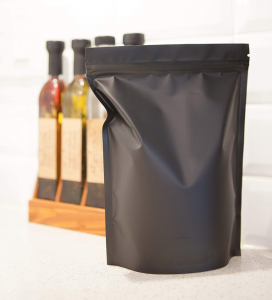
How to make your own DIY MRE Food
Last updated on July 16th, 2024 at 11:41 pm
MREs replaced the canned-type field rations for American soldiers in 1981. Made possible by dehydration and freeze-drying, an MRE is a bag-packaged meal where you simply add hot water. Due to the light-weighted nature of MREs, backpackers and general outdoorsman have adopted these as the meal of choice when venturing out into the backcountry. However, the off-the-shelf stuff is generally expensive. You can make your own DIY backpacking meals at a much lower cost with store bought items.
Check out this other article if you’re simply looking for easy camping meals to make.
For a premium MRE alternative, check out this article on RightOnTrek’s Dehydrated Meals
Jump to the instructions on how to make your own MRE
How much do Store Bought MREs cost?
Around $10 per meal if you go brand name. Alternatively, if your palate isn’t picky, you can buy an army surplus MRE for around $4 per meal. The caveat with these MREs are that they are not dehydrated and weigh more while backpacking – not the best.
Store bought MREs are pretty expensive once you break it down. A preference of many backpackers is Mountain House, but each meal can cost around $8.50. What you’re paying for is convenience and shelf-life in a light-weight meal you won’t mind carrying on the trail. Just add water and you have yourself a meal. Other brands can cost up to $15 each.

Alternatively, army surplus is a great source for cheap MREs. These average around $4 a meal and come in a highly decorated brown bag. While they aren’t made for winning over refined palates, they are cheap calories for backpacking or keeping in an at-home emergency kit. They look seriously cool, too.
The downside to these is that they are hydrated, and “ready to eat,” which means they weigh more than a dehydrated meal. This is a consideration to make between backpacking and price.

How to Make DIY Backpacking Meals
You can make your own DIY backpacking meals for much cheaper while still maintaining the core concepts of the MRE. You can make a dehydrated, lightweight, delicious meal with simple items you can buy from the store. Simply add materials to a gallon zip-lock bag, suck the air out, and put into the meal pocket of your backpack. When you’re hungry, add hot water.
Dehydrated carbohydrates are easily found.
Pick a base for your DIY MRE:
- Instant Ramen as a base with seasoning comes in under $1 each
- Rice and Beans are pretty cheap as well and are measured in pounds.
You get the point. Each of these above should be well under $10 and come in dehydrated weights measured in pounds. The pack of Instant Ramen is 24 meals with seasoning and is my recommendation as a base.
Find Freeze Dried Meat and Veggies
Meat and veggies add to the much needed calorie count. Animal products will be more calorie dense per weight, but you can add other veggies, nuts, or legumes that can make a delicious meal. Luckily freeze dried foods are easily found and can be added to your DIY backpacking meal.
- Freeze Dried Sausage provides 20-servings for under $2.50 a serving
- Dehydrated vegetables come in a 2-lb bag for ~$25

Total Cost of a Homemade MRE
For a simple meal of rice, vegetables, and sausage at the prices above; I pen out my costs to about $75 for AT LEAST 20 meals. This places the cost at $3.80 per meal if we used up all the sausage. However, I’m positive that the rice and vegetables could be extended further with additional protein.
You can always use a dehydrator to dry your own meat like what I did with biltong.
How to Elevate Making Your Own MREs
The first thing to do in order to elevate a homemade MRE is to package it appropriately.
Package Your Own DIY MRE Food Using:

Use Mylar bags to make your DIY backpacking meal much easier to rehydrate and eat in the backcountry. You can even use a simple vacuum sealer to remove the air in the packaging to make them infinitely more packable.